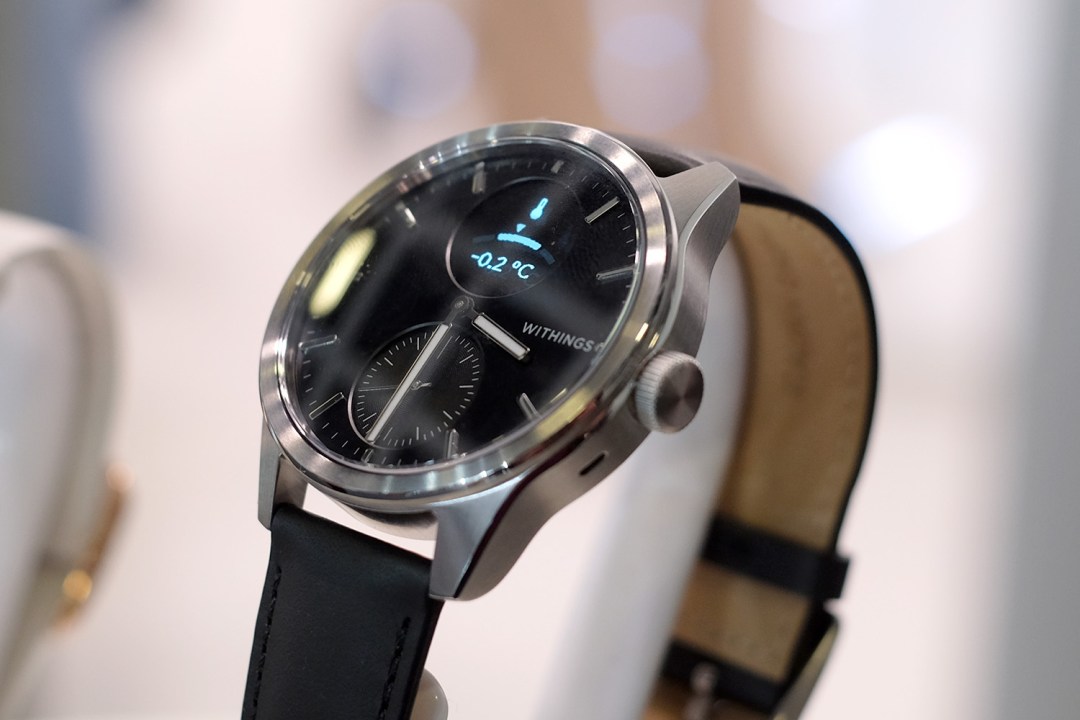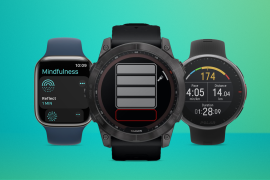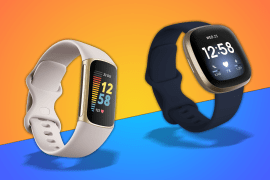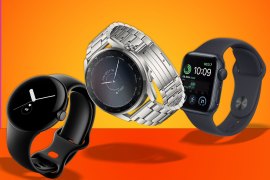Withings ScanWatch 2 hands-on review: getting hot in here?
The ScanWatch 2 now has a temperature sensor, used to predict when you might be about to get ill

Early verdict
Withings adds temperature tracking to one of its best all-round watches. What’s not to like?
Pros
- More health smarts than most would guess
- Has an advanced temperature sensor
- Retains all the original Scanwatch good bits
Cons
- A bit thicker this time round
- Slightly pricier than the original
Introduction
Withings is a quiet innovator in the world of fitness watches. It made the first hybrid watch, and has produced some of our favourite wearables to wear as, you know, a watch. The ScanWatch 2 is the company’s most advanced watch yet, the sequel to 2020’s original ScanWatch.
This year’s latest addition is a temperature sensor, used to predict when you might be about to get ill.
We got up close and personal with the Withings ScanWatch 2 during the IFA 2023 show, where it was announced, to see whether it might be up your street and worth the $350/£320 asking price.
Withings ScanWatch 2 design: flash of Steel



Withings nailed down the basic design we see in the ScanWatch 2 years ago, in 2017’s Withings Steel HR. This was the company’s first watch with a little porthole screen, unlocking loads more capabilities than just step counting.
The ScanWatch 2 is also a slightly more built-up design than some of Withings’s other watches. It has a bright stainless steel casing, an a dome of ultra-hard Sapphire protecion above the actual watch arms.
Not familiar with thes Withings hybrids? The ScanWatch 2 combines real, moving watch arms with fitness tracker smarts.
The second dial in the bottom half of the watch can also be used to show how close you are to meeting your daily steps goal. This has been a staple of the Withings watch concept since the first watch of the lot, 2014’s Withings Activite.
We’ve moved on a lot since then, of course, and the ScanWatch 2’s latest addition is a temperature sensor.
Withings ScanWatch 2 features: feeling peaky?



These made big news in the Apple Watch Ultra, where dual temperature sensors are used to estimate your basal body temperature. The primary goal here is to be able to work out ovulation times, to help folks who are trying to have a baby.
The Withints approach is a little different, though. The ScanWatch 2 lets you see when your body temperature starts to stray away from your norms, which could be a sign you are getting ill.
There’s a little screen dedicated to this, and it looks a bit like a retro gauge, where a dial indicates where your current temperature is compared to your standard baseline. We could have really done with this a couple of years ago but, hey, people are still coming down with covid and colds all the time, right?
The watch measures your temperature 24/7, rather than taking the safe route of only scanning overnight in order to maintain some semblance of consistency.
There’s rarely gong to be a true need to taketh Withings ScanWatch off either, as it has 5ATM water resistance and the battery lasts up to 30 days off a charge.
Withings ScanWatch 2 display: who needs colour?

As ever, the Withings ScanWatch 2’s little OLED display looks excellent, with surprising clarity considering it’s a tiny, monochrome porthole. Withings says it’s a 282ppi screen, one with 14504 pixels, making it a bit less sharp than an Apple Watch display.
You have a choice of 38mm and 42mm casings, just like the original ScanWatch, and Withings says this new model is marginally thicker in order to house the new temperature sensor. We’ll let WIthings off, because this is no barebones piece of tech. Just like Apple’s version, it measures both skin and ambient temperature.
This is crucial, because it lets the ScanWatch 2 recognise when you appear to be hotter because it’s simply baking outdoors. A single temperature sensor alone can’t do that, unless it were to snag weather reports online or something — and since when have those been reliable anyway?
Withings told us the ScanWatch 2 does have menses cycle tracking, but it relies on manual tracking rather than the temperature sensor. We wouldn’t be entirely surprised if the company is working on temperature-based cycle tracking in the background, but there’s no official word that this is the case.
The rest of the ScanWatch 2’s features are roundly co-opted from the original Scanwatch’s. We get an ECG heart health sensor, for example — Withings is always keen to remind us it was the first to get a wearable with one of these wearables passed by the US FCC regulatory body.
An ECG looks at your heart rhythm more closely than an optical heart rate sensor can to check for signs of arrhythmia.
The watch doesn’t, however, have GPS. It’s more of a health watch than a hardcore fitness band, but it isn’t half a handsome one and still has 40 activity tracking modes. If you’re not fussed about the advanced health stuff, you should also consider the brand new ScanWatch Light. It loses the temperature sensor and ECG, but costs less and arguably looks even better, leaning further into the Withings minimalist aesthetic.
Want to go the other way? The top-tier ScanWatch Horizon is still part of the line-up, but doesn’t have a temperature sensor.
Withings ScanWatch 2 verdict
WIthings watches age better than almost any other gadget, but an update to a much-loved model is always welcome. The ScanWatch 2 takes everything that made the original ScanWatch a success, and adds another capability to its roster.
A dual temperature sensor looks at your body temp in a similar fashion to the Apple Watch Ultra, in order to compensate for changes in ambient temperature. It uses it in a different way, though, as an indicator something is up rather than reproductive cycle tracking.
We’ll have to test drive the ScanWatch 2 for weeks, minimum, to see how useful this feature really is. But on paper, we’re game.



